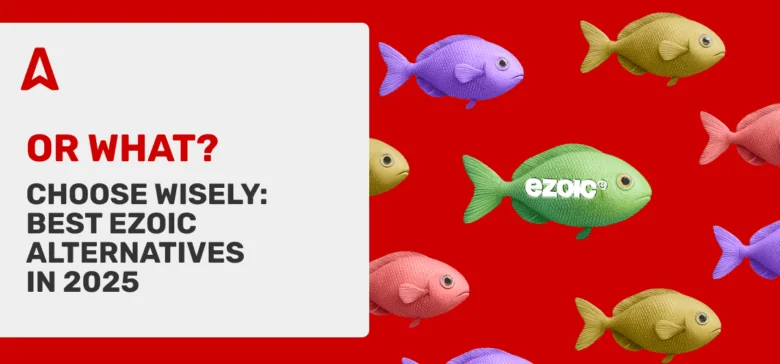Looking for the best Ezoic alternatives to maximize your ad revenue in 2025? Whether you’re scaling up or just getting started with website monetization, there’s no shortage of platforms ready to optimize your ad performance.
In this guide, we break down the 12 top contenders, each offering unique benefits, better UX, and scalable ad tech to help you grow your earnings without the limitations of Ezoic.
Ready to find the right alternative to Ezoic for your site? Let’s dive into the platforms that can boost your RPM and unlock your revenue potential in 2025.
What is Ezoic?
Ezoic is a Google Certified Publishing Partner known for its AI-based optimization engine, which tests different layouts, ad placements, and formats to boost ad revenue.
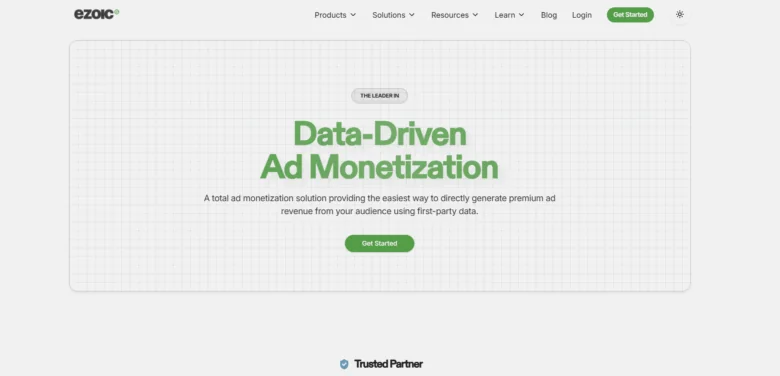
It offers features like Leap for site speed, Big Data Analytics for performance insights, and video monetization tools.
Ezoic supports Display ads, Native ads, and Video ads, making it an all-in-one solution for many publishers.
What makes Ezoic particularly appealing is its ability to run thousands of experiments simultaneously.
The system learns which layout, ad density, or color scheme works best for each user and device. That level of automation is what helps many publishers see a lift in earnings.
However, despite these features, not every publisher thrives on Ezoic. Over time, many website owners start looking for platforms that offer more control, faster loading speeds, or higher payouts.
Being interested in Ezoic alternatives for sure means being ready to do some work over your profit. No pressure, but you’re very welcome to try what Adsterra offers in order to help you make some money on your website.
Why Look for Alternatives?
Ezoic might not be the ideal solution for everyone. Here’s why publishers look for it:
- Slow site speed: Ezoic’s complex scripts can impact Core Web Vitals, particularly LCP and CLS.
- Complex setup: DNS-level integration often intimidates beginners. Misconfiguration can take your site offline.
- Approval delays: Getting through their Access Now program and reaching full features may take months.
- Revenue sharing: Depending on your tier, Ezoic takes a cut from your earnings — often without clarity.
- Design disruption: Their AI might prioritize revenue over user experience, affecting brand consistency.
There’s also the issue of support. While Ezoic provides technical help, responses can be slow unless you’re a premium-tier partner.
For sites that want prompt, reliable support and simple onboarding, looking at the best alternatives makes a lot of sense.
Additionally, many publishers find that Ezoic’s optimization tools can conflict with SEO strategies.
Frequent layout shifts, excessive ads above the fold, and poor CLS performance can reduce a site’s ranking potential — especially with Google placing more emphasis on Core Web Vitals in 2025.
SEO Considerations When Choosing an Ad Platform
Your monetization strategy should never come at the expense of SEO.
When choosing an alternative to Ezoic, think beyond revenue and look at how the platform impacts your site’s visibility.
Here are some SEO-related points to consider:
- Page Speed & Core Web Vitals: Ensure your chosen platform doesn’t overload your site with scripts that slow load times. Google rewards fast, responsive sites.
- Ad Density & Layout: Too many intrusive ads can increase bounce rates and lower time-on-page metrics — both important for SEO.
- Mobile Optimization: Mobile-first indexing means your ad layout must look clean and fast-loading on mobile devices.
- Lazy Loading and Deferred Scripts: Some networks support lazy loading and asynchronous scripts, which help maintain SEO health.
- Cumulative Layout Shift (CLS): Platforms that insert ads after the page loads can hurt CLS scores and lead to ranking penalties.
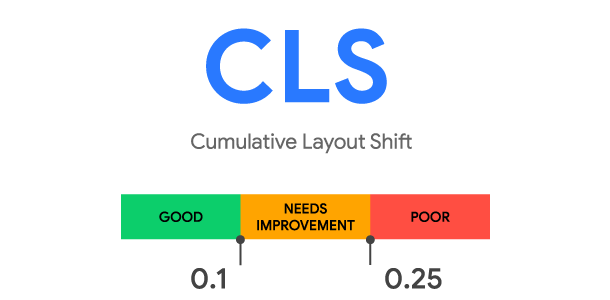
Many alternatives offer SEO-friendly ad scripts that load after essential content.
Some, like Snigel or Setupad, even offer tools specifically optimized for Core Web Vitals.
Looking to boost your revenue today? Sign up with Adsterra and start monetizing within minutes!
Top Ezoic Alternatives for 2025
1. Adsterra
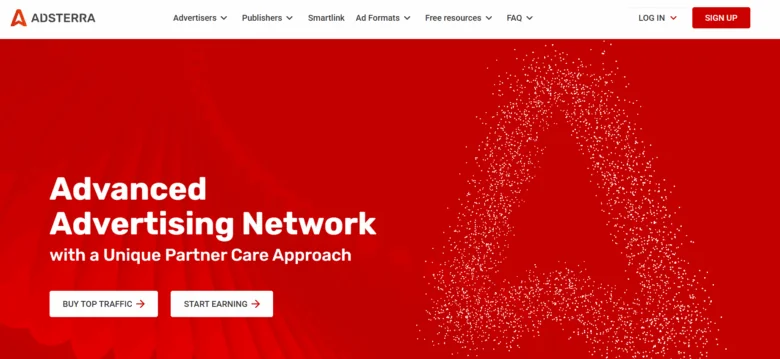
Adsterra is a reputable global ad network known for its worldwide reach, instant approval, and monetization flexibility.
It supports a wide range of ad formats, including Banners, Popunders, Social bar ads, and Native ads.
Its user-friendly dashboard and direct publisher support make it especially appealing to beginners and mid-level publishers.
- Traffic Requirement: None
- Best For: International traffic, social and streaming content, and aggressive monetization strategies
- SEO Benefit: Lightweight ad scripts and customizable placement options help minimize layout shift
💡 Tip: Adsterra allows simultaneous use with other ad management platforms like Google AdSense to maximize fill rates.
2. Mediavine
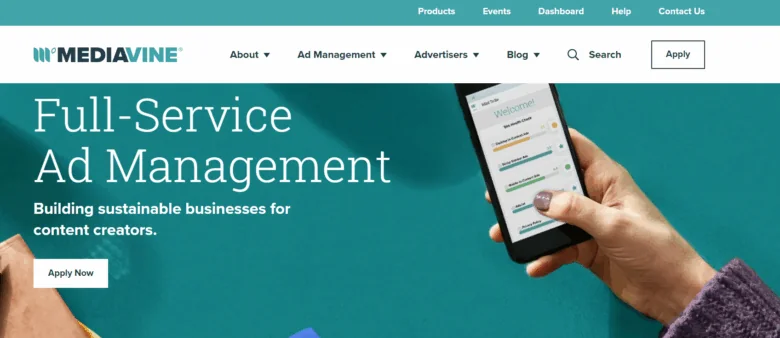
Mediavine is ideal for content creators with high-quality U.S. traffic.
It requires 50,000 monthly sessions and focuses on high RPMs, clean UX, and SEO-friendly ad placements.
- Traffic Requirement: 50,000 monthly sessions
- Best For: Lifestyle, food, parenting, and health blogs
- SEO Benefit: Fast-loading ads, strict layout policies, and compliance with Core Web Vitals
3. Raptive (ex-AdThrive and CafeMedia)
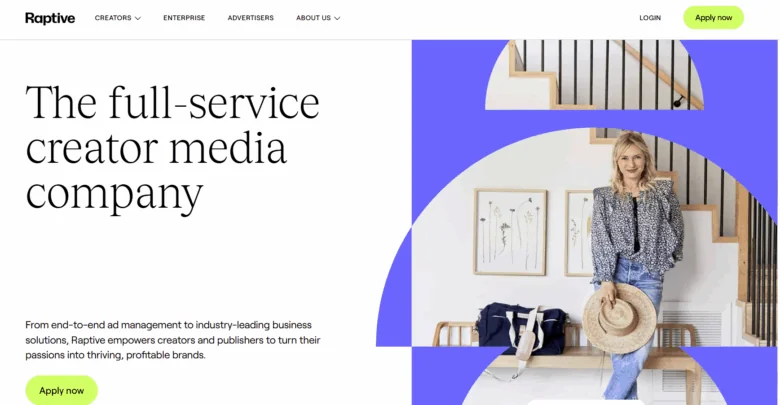
Raptive targets publishers with U.S.-based audiences and over 100,000 pageviews/month.
Known for premium advertisers and personalized account management, this advertising network delivers some of the highest RPMs in the industry.
- Traffic Requirement: 100,000 monthly pageviews
- Best For: Large content sites in finance, tech, and lifestyle niches
- SEO Benefit: Clean ad layouts that protect user experience
4. Monumetric
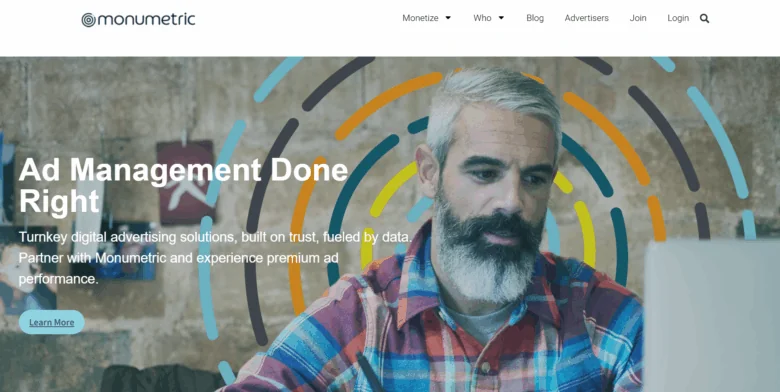
Monumetric is a solid intermediate alternative to Ezoic.
It focuses on optimizing UX and ad performance through advanced targeting and header bidding strategies.
- Traffic Requirement: 10,000 monthly pageviews
- Best For: Mid-tier publishers focused on design and usability
- SEO Benefit: Thoughtful placements and low script load
5. SHE Media

SHE Media is an advertising network specializes in monetizing female-oriented content.
With a mix of sponsored content and display ads, it’s ideal for bloggers in parenting, fashion, or wellness.
- Traffic Requirement: 5,000 monthly sessions
- Best For: Female-focused niches
- SEO Benefit: Native-style ad formats reduce bounce rate and preserve aesthetics
6. Setupad
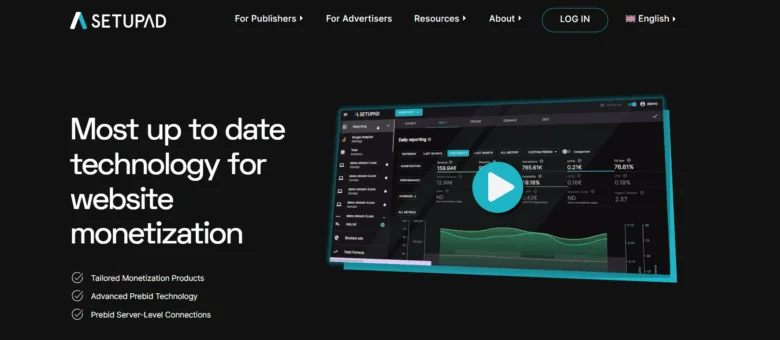
Setupad uses header bidding and prebid.js to maximize RPMs across global audiences.
Their onboarding process is hands-on, and they offer Core Web Vitals optimization.
- Traffic Requirement: 100,000 monthly pageviews (recommended)
- Best For: Publishers with international traffic and technical know-how
- SEO Benefit: Asynchronous loading and CLS-tested ad formats
7. Snigel
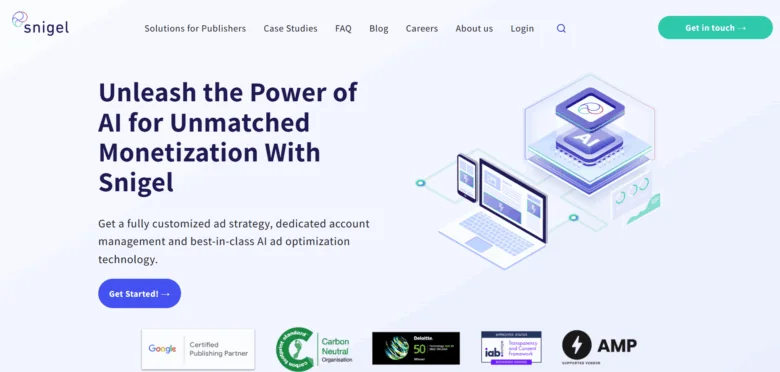
Snigel is a premium ad management platform offering tailored ad layouts, lazy loading, and tools designed to protect CLS scores.
Their team customizes each implementation based on publisher goals.
- Traffic Requirement: 50,000 monthly sessions
- Best For: Publishers prioritizing Core Web Vitals and user engagement
- SEO Benefit: All ad units optimized for SEO performance
8. PropellerAds
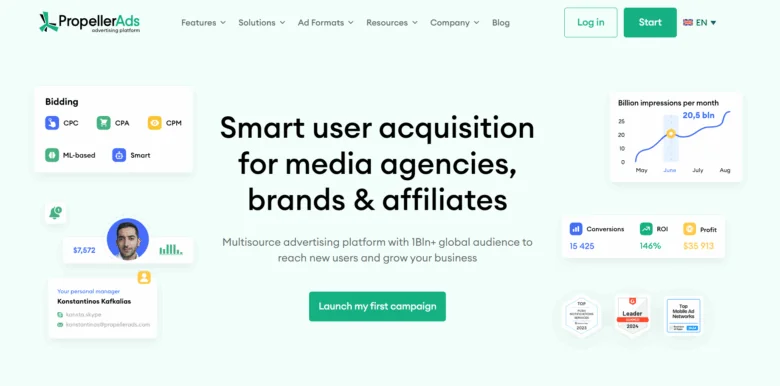
PropellerAds is one of the largest Push notification and Popunder ad networks. It excels in monetizing sites with high traffic and relaxed UX expectations.
- Traffic Requirement: None
- Best For: Streaming, file sharing, viral content
- SEO Benefit: Use with caution — great for revenue, but best used on non-core pages
9. Media.net
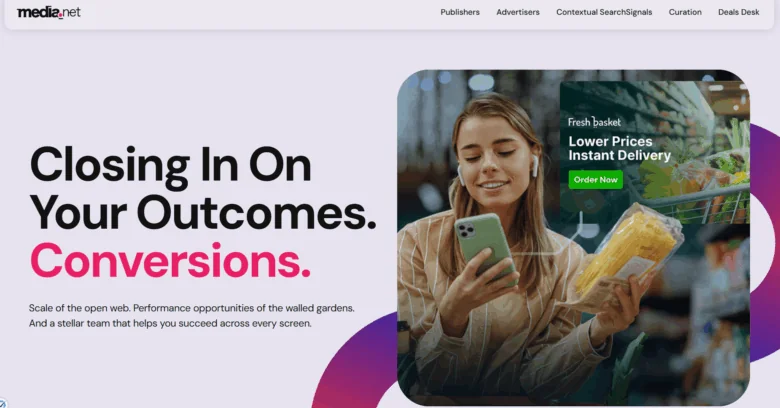
Media.net offers contextual advertising powered by the Yahoo Bing network.
It works especially well for sites with U.S. and U.K. traffic and focuses on high-quality Display and Native ads.
- Traffic Requirement: No hard rule, but better results with >10k monthly visits
- Best For: Content-heavy blogs, business and tech sites
- SEO Benefit: Clean ad appearance and relevance-based targeting
10. RevenueHits

RevenueHits pays per action, not impression or click.
It’s a solid alternative if you have high-converting audiences.
- Traffic Requirement: None
- Best For: Niche sites with affiliate-like audiences
- SEO Benefit: Lower ad density can improve page speed
11. Bidvertiser

Bidvertiser is a lesser-known but reliable ad network offering a variety of monetization options including Display ads, Native units, Popunders, and more.
Like many premium ad networks, Bidvertiser requires no minimum traffic, making it ideal for small or emerging websites just starting their monetization journey.
- Traffic Requirement: None
- Best For: Niche or geo-targeted traffic, beginners
- SEO Benefit: Low barrier to entry enables early testing of monetization strategies without impacting UX-heavy SEO elements
12. BuySellAds
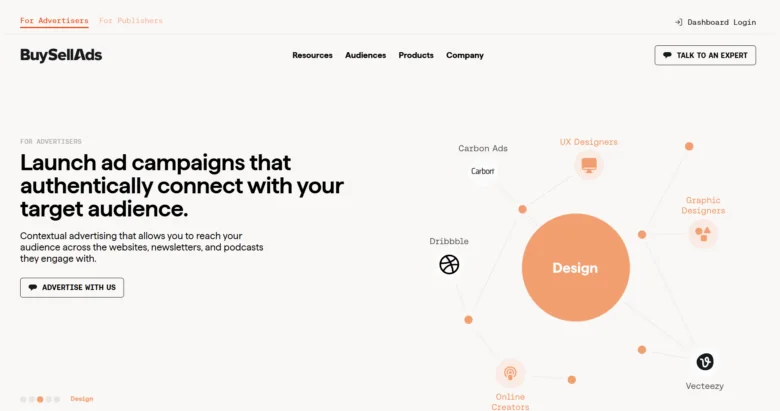
BuySellAds connects advertisers directly with publishers via a marketplace.
Great for developers, design blogs, or SaaS websites.
- Traffic Requirement: None, but better with niche authority
- Best For: Tech, SaaS, finance niches
- SEO Benefit: 100% control over ad placement and code inclusion
Still undecided? Test two or three networks in parallel to measure actual revenue impact before fully switching.
How to Choose the Best Ezoic Alternative
Optimizing Fill Rates for Maximum Ad Revenue
Fill rate — the percentage of ad requests that result in a filled ad — directly impacts your bottom line.
Low fill rates can leave valuable impressions unsold.
Here are a few tips to increase your fill rate effectively:
- Use a Header Bidding Solution: Platforms like Setupad or Snigel can connect you with multiple demand partners, boosting the chance of a filled impression.
- Geo Diversification: Work with networks like Adsterra or PropellerAds that serve global traffic, especially if your audience is international.
- Backfill Strategies: Combine premium networks (like AdThrive) with fallback options (like RevenueHits or Media.net) to ensure every impression counts.
- Ad Refresh and Lazy Loading: Refresh ads for long visits and load them dynamically to maintain good UX and higher RPMs.
- Test Multiple Formats: Include Native, Social Bar, and Banner ads to diversify inventory and attract different types of advertisers.
A multi-layered ad strategy will improve your fill rate while keeping your SEO and user experience intact.
When selecting from the best alternatives, consider the following factors:
- Traffic Volume: Determine whether the ad management platform requires a specific minimum number of sessions or pageviews.
- Revenue Model: Choose between CPM (impressions), CPC (clicks), or CPA (actions) depending on your audience behavior.
- Ad Format Compatibility: Make sure the platform supports the types of ads you’re comfortable using — especially if you want to maintain a positive user experience.
- Technical Skills: Some networks require header bidding or GAM expertise, while others are plug-and-play.
- Payout Terms: Review the minimum payout threshold and payment methods (PayPal, wire, crypto, etc.)
- Reputation: Check reviews from real publishers, particularly in your niche.
- SEO Integration: Ask whether the platform provides Core Web Vitals optimization, CLS-friendly layout policies, and mobile-first ad units.
- Reporting & Testing: Look for platforms that offer advanced analytics and A/B testing so you can measure the impact of changes on your revenue and SEO.
Don’t hesitate to test multiple platforms — many allow you to run them alongside Google AdSense or Adsterra to optimize revenue.
No Minimum Traffic Requirements: Pros and Realities
One of the biggest advantages of many alternatives — especially platforms like Adsterra, PropellerAds, and RevenueHits — is the absence of strict minimum traffic requirements.
Unlike networks such as AdThrive or Mediavine that demand 50,000+ monthly sessions, these platforms are open to publishers regardless of audience size.
This inclusive approach means you can start monetizing your site from day one, even if you’re just beginning to build your traffic.
For new bloggers, small niche site owners, or side-hustlers, this can be a powerful opportunity.
That’s how: You gain real-world data on ad performance, start earning something immediately, and get experience working with ad networks — all without having to wait until you “qualify.”
However, it’s important to approach this opportunity with a clear and realistic mindset. While low-barrier entry is attractive, it doesn’t mean you’ll earn significant income right away.
Ad revenue is inherently tied to traffic volume, visitor behavior, and geography. For example, a site with 500 daily pageviews from Tier 3 countries will earn considerably less than a site with 5,000 daily views from Tier 1 countries like the U.S., U.K., or Canada.
If your traffic is still small, your earnings will reflect that — perhaps only a few cents to a couple of dollars per day. That’s not a failure; it’s the nature of performance-based advertising.
Mindset Importance
What’s vital here is mindset. Using a no-minimum-traffic network should be seen as an entry point, not a quick win.
It’s an opportunity to lay the groundwork: Test ad placements, experiment with formats (like Native or Interstitials), and understand your site’s monetization potential.
But to see real returns, long-term effort is essential. You’ll need to invest in quality content, SEO optimization, and consistent traffic growth.
Pairing your ad strategy with traffic-building tactics — such as improving Core Web Vitals, targeting long-tail keywords, and building internal links — will help you steadily increase both your earnings and eligibility for higher-tier ad partners in the future.
In summary, low-traffic-friendly platforms let you get in early — but turning that access into meaningful revenue is a marathon, not a sprint.
Final Thoughts
There’s no one-size-fits-all solution when it comes to website monetization.
While Ezoic remains a powerful tool, exploring Ezoic alternatives can help you improve site performance, gain more control, and boost your revenue.
Whether you’re aiming for higher CPMs, better user experience, or more flexible ad units, these 12 platforms provide solid alternatives that cater to different levels of traffic and niches.
With the right combination of tools and platforms, you can create a tailored monetization strategy that scales with your content and audience.
Remember, sustainable monetization is not just about ad revenue — it’s about balancing income with search engine visibility and audience satisfaction.
By focusing on both SEO health and monetization strategy, you’ll set your site up for long-term growth.
Ready to take your monetization to the next level? Sign up with Adsterra today and explore the smarter way to earn more in 2025.
Ezoic Alternatives FAQ
What is better than Ezoic?
“Better” depends on your site type and goals.
For example:
– Adsterra offers global monetization with no traffic limits.
– Mediavine and AdThrive excel in premium RPMs for U.S. traffic.
– Snigel focuses on speed and UX while maintaining high yields.
Choose the platform that matches your priorities — whether it’s site speed, payout, or support.
How much does Ezoic pay per 1,000 views?
Ezoic RPMs vary widely. Publishers report between $5 to $25 depending on niche, country, and ad layout performance. Some niches like finance and tech earn more, while lifestyle or hobby blogs may earn less. Testing different placements can also influence your actual payout.
What is the minimum traffic for Ezoic?
Ezoic’s Access Now program has no traffic requirement, but their full-featured monetization (like premium demand and video) usually kicks in around 10,000 monthly sessions. Higher traffic tiers unlock faster support, better fill rates, and more control. Looking for the best Ezoic alternatives to boost your ad revenue in 2025? You now have 12 high-performing options to choose from. Whether you’re a beginner or a pro, there’s a platform out there that’s perfect for your monetization journey. Don’t wait — take control of your earnings today!
